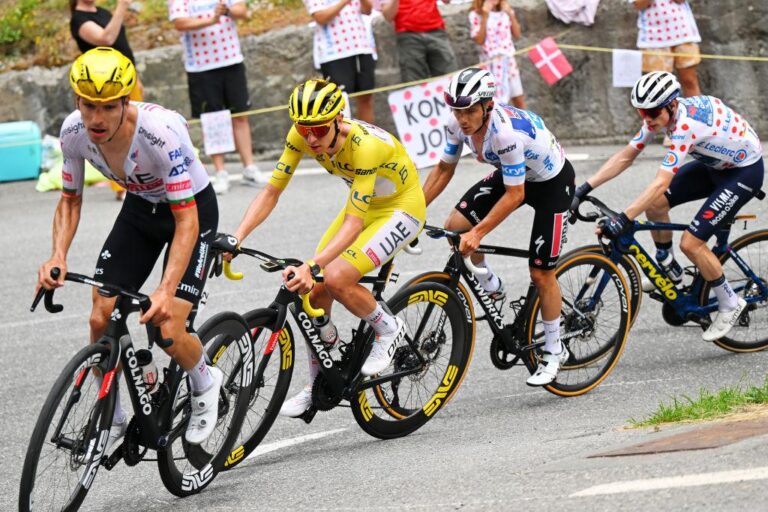Tour de France vs. Tour de France Femmes: 3 Key Differences and Similarities
As the world of cycling continues to evolve, the spotlight increasingly shines on the growing prominence of women’s competitive cycling, particularly with the emergence of the Tour de France Femmes. Launched as a counterpart to the legendary Tour de France, the women’s race not only celebrates athletic prowess but also highlights the strides made toward gender equality in sports. This article delves into three essential differences and similarities between the two iconic events, offering insights into their historical contexts, race formats, and the broader implications for the sport. Join us as we explore what sets these two prestigious races apart while also illuminating their shared legacy in the cycling community.
Tour de France vs Tour de France Femmes: A Comparative Overview of Historical Significance
The Tour de France, initiated in 1903, has long been a symbol of endurance, competition, and cycling excellence. Known for its grueling course, the race not only showcases elite athletes but also significantly impacts the global cycling landscape. Key historical facts:
- First Edition: 1903
- Number of Male Participants: Traditionally in the hundreds, with nearly 200 entrants in recent editions.
- Global Reach: Broadcast widely, attracting millions of viewers across continents.
In contrast, the Tour de France Femmes, relaunched in 2022 after a long absence since the 1980s, represents a pivotal moment in women’s sports, highlighting both progress and the ongoing journey toward equality in cycling. Notable aspects of the women’s race include:
- First Modern Edition: 2022
- Historical Participation: Initially minimal, now rapidly growing with impressive viewership and media attention.
- Focus on Visibility: Aiming to elevate women’s cycling on par with men’s events through strategic marketing and sponsorship.
Analyzing the Structural Differences in Race Format and Length
The structural differences between the Tour de France and the Tour de France Femmes extend far beyond the gender of the participants. Primarily, the length of the races showcases a significant disparity. The Tour de France typically spans approximately 3,500 kilometers over 21 stages, while the Tour de France Femmes is designed to be more concise, averaging around 1,000 kilometers across 8 stages. This variation not only impacts the endurance and strategy required from the cyclists but also influences how teams approach their training and recovery protocols.
In addition to length, the race formats also diverge, particularly in their stage compositions. The men’s event often features a mix of flat stages, mountainous terrain, and time trials, offering a diverse challenge that tests a rider’s versatility. Conversely, the women’s race is structured to include a blend of flat and mountainous stages, though it may not be as diverse in its individual challenges as its male counterpart. These distinctions shape the tactical aspects of racing, where riders in both events must adapt their strategies according to stage profiles and overall team dynamics.
| Feature | Tour de France | Tour de France Femmes |
|---|---|---|
| Length | ~3,500 km | ~1,000 km |
| Stages | 21 | 8 |
| Typical Features | Flat, Mountains, Time Trials | Flat, Mountains |
Sponsorship and Media Coverage: The Impact on Athlete Exposure
The disparity in sponsorship opportunities between the Tour de France and the Tour de France Femmes significantly influences athlete visibility and brand associations. The larger budget and historical precedence of the men’s race attract sponsorships from prominent international brands, resulting in a wider reach and more comprehensive media coverage. In contrast, the women’s race, while gathering momentum, faces challenges in securing equivalent levels of financial backing. This leads to a need for innovative strategies to amplify visibility through alternative sponsorship models, such as grassroots partnerships and social media campaigns, which emphasize personal stories and community engagement.
Media coverage plays a crucial role in enhancing athlete exposure. The Tour de France enjoys an extensive broadcasting reach, significantly benefiting from established media partnerships that create a robust platform for athletes to showcase their talents. On the other hand, the Tour de France Femmes is still carving out its place, with growing coverage through digital platforms and niche cycling media outlets, which highlights athletes’ journeys but often lacks the same instantaneous global reach. To illustrate this difference, the following table showcases key aspects of media coverage for both events:
| Aspect | Tour de France | Tour de France Femmes |
|---|---|---|
| Broadcast Network | Established, global networks | Emerging digital platforms |
| Social Media Engagement | High engagement across platforms | Growing but limited reach |
| Brand Sponsorship | Major international brands | Smaller, niche sponsors |
Future Directions: Recommendations for Enhancing Women’s Cycling Events
To bolster women’s cycling events and elevate their profile within the sport, several strategic enhancements should be considered. Firstly, increasing financial support and sponsorships tailored to female cyclists can help bridge the resource gap compared to their male counterparts. This includes upping the prize money and support for teams, making the competition more attractive for elite talent. Additionally, expanding media coverage of women’s races, both through traditional outlets and social media platforms, will allow audiences to engage more deeply with female athletes and their stories.
Moreover, fostering community engagement through local events and grassroots initiatives can inspire young women to take up cycling. Pairing professional races with amateur events creates a festive atmosphere that showcases role models and motivates aspiring cyclists. Collaborating with schools and community centers to host workshops and training sessions can also cultivate a strong pipeline of talent in women’s cycling. Investing in these areas will not only enhance the visibility of women’s events but will also encourage broader participation and support, securing a sustainable future for the sport.
In Summary
In conclusion, while both the Tour de France and the Tour de France Femmes share the same prestigious heritage and showcase exceptional cycling talent, they each present unique characteristics that reflect their distinct narratives. From differences in race format and duration to the varying historical contexts, both events contribute to the vibrant tapestry of professional cycling. As we look to the future, these competitions will continue to evolve, inspiring a new generation of cyclists and fans alike. The increasing visibility of women’s cycling, alongside the storied traditions of the men’s race, highlights the growing inclusivity within the sport. As both tours head toward their next chapters, they remain pivotal in celebrating the spirit of cycling and the athletes who challenge themselves in pursuit of glory.




